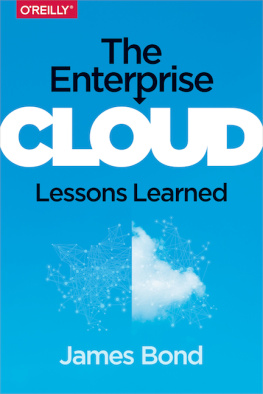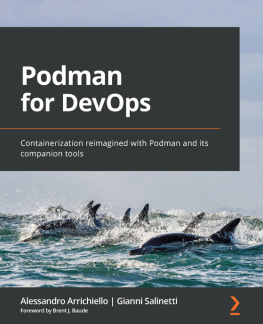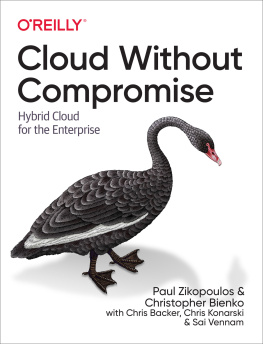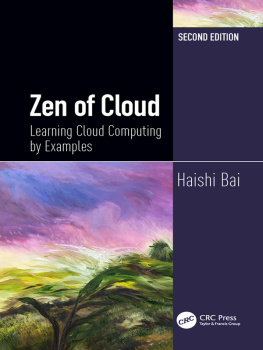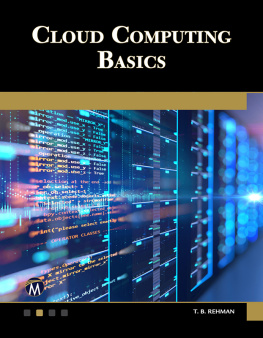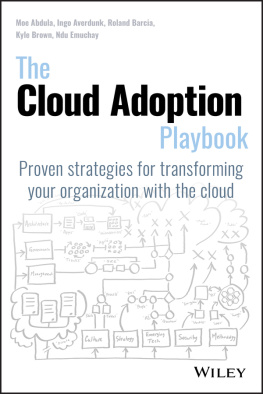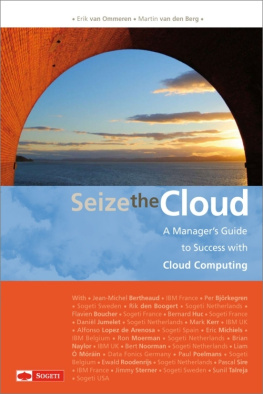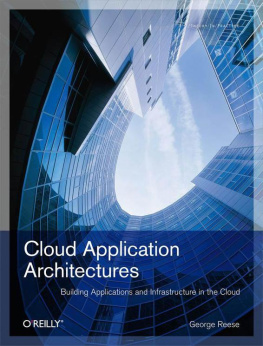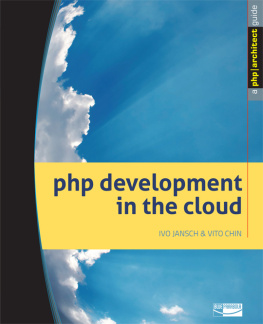In 1905 George Santayana observed that, Those who cannot remember the past are condemned to repeat it. That observation also applies to information technology.
James Bond has painstakingly and methodically written what I consider to be one of the definitive books on the subject of the Enterprise Cloud. It includes an excellent chronology of how we got here, the myriad of implementation variations that exist and what each is good for, and most importantly, lessons learned along the way that can enable readers to avoid many of the pitfalls that negatively affected early adopters. The material that James lays out can be likened to a Systems Development Life Cycle for Enterprise Cloud that includes strategic planning, straight through to a step-by-step roadmap for implementation and operation.
I have personally spent over four decades as an information technology practitioner, and the best compliment I can give Jamess book is that I learned a great deal from reading the manuscript, and I would buy this book myself. I highly recommend it!
Preface
Despite the significant momentum and industry buzz about cloud computing, only a fraction of organizations have an enterprise cloud. Most organizations are still planning their cloud transition strategy while incrementally improving traditional IT services and modernizing data centers. Consolidating enterprise datacenters and implementing server virtualization and automation are critical components of any modernization initiative; however, virtualization and automation are only part of the transition to a cloud environment. Although shifting workloads and commodity information technology (IT) services to a third-party hosting provider is not a new trend, cloud computing is a new style of delivering IT that provides on-demand elastic computing capacity through self-service ordering and automated provisioning systems. We have seen our first generation of public cloud providers, enterprise customers building private clouds, and more recently, a shift toward the . With only a fraction of worldwide organizations already migrating to the cloud, the migration of internal enterprise IT to the cloud will be the most significant transformation within the IT industry.
The shift of traditional on-premises enterprise IT systems (e.g., server farms, storage, networks, and applications) to hosted cloud-based datacenters and providers will dominate the industry over the next 10 years. Cloud-based virtual machines (VMs), storage, and mobile applications are now common and widely available to customers; however, the available public cloud services are still in the childhood years of sophistication and feature depth. The Enterprise Cloud: Best Practices for Transforming Legacy IT will provide insider knowledge and lessons learned regarding planning, architecture, deployment, security, management, and hybrid and cloud brokeringtechnologies and processes that are now the dominant concerns and focus for enterprise IT organizations. As a cloud subject matter expert with significant hands-on experience, I am constantly asked for more information on what Ive learned, the necessary business process changes, and the best practices to transition from enterprise IT to a cloud-computing environment. Based on real customers and providers, in commercial and public sector industries, this book also chronicles some of the many successes as well as the less-than-successful cloud deployments, and provides valuable lessons from which we can all learn.
What Is Included in This Book
This book will help you understand the best practices based on actual field experience transitioning on-premises enterprise IT services to a cloud-based environment. Whether you are still planning or ready to implement your long-term cloud strategy, this book will help you evaluate existing cloud technologies and service providers. I cover the cloud from two perspectives: as a consumer of cloud services and as an owner/operator of your own enterprise private or hybrid cloud. Knowledge acquired in the real world is analyzed from the perspectives of operations, security, billing and finance, application transformation, and deployment. Each of these learned lessons are then converted into best practice checklists to save you and your organizations countless dollars and time.
Here is a glance at what is in each chapter:
:
Planning and ArchitectureIn this first chapter, I discuss the basic characteristics, definitions, deployment models, and foundational knowledge necessary to plan your transition from enterprise IT to the cloud. It is essential to understand how IT is transforming from traditional datacenters and IT departments to cloud-centric computing. I take you back in time and discuss the roots of the IT industry to demonstrate how cloud computing is really just a new style of IT service delivery that takes advantage of many computing techniques that were created more than 30 years ago. I analyze key technologies that are used in cloud computing environments, such as virtualization, application transformation, and automation. Concepts and definitions of the cloud, widely accepted since 2010, will be updated and refreshed based on real-world cloud deployments, customer experiences, and challenges encountered.:
Operational TransformationIn this chapter, I explore lessons learned in the area of cloud operations and management. I discuss challenges that were not foreseen when many service providers and customers began their cloud transition over the past years. Topics include virtualization, automation, continuous monitoring, capacity management, operational personnel, Information Technology Infrastructure Library (ITIL) process changes, and best practice checklists.:

